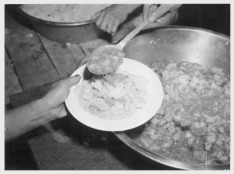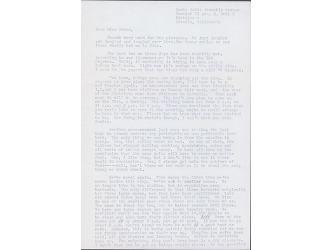Life in Camp
While each person's experience was as varied as each person, there were some constants such as the cafeteria style mess halls, latrines for bathrooms, and barracks for houses. The concentration camps were, as you know, small communities with schools, medical clinics, farms and social activities. Within the barbed wire fences, those interned were able personalized their "homes" and organize various activities to be as comfortable as possible.
Food in Internment Camps
Food is something that is close to all of our hearts. There is nothing like a home cooked meal to make you feel at home. Unfortunately, those interned were not allowed the luxury of eating a home cooked meal together with their families, as shown in the right picture below. This picture is a mess hall in Manzanar.
Clara Breed Collection
The Japanese American National Museum holds this collection of over 250 letters and postcards she received from children who were sent to the internment camps. Clara Breed, or Miss. Breed, was a librarian in San Diego, CA., and had developed relationships with many of the children before they were sent to camp. The day that they left the San Diego train station, she gave out self-addressed stamped postcards to these children asking them to write to her about their time in the camp. Click here to go to the online collection.






